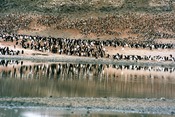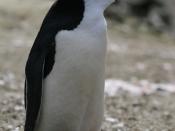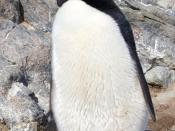Penguins Introduction When most people think of birds and the Antarctica, they think of the penguin. The penguin is almost a mascot of the Antarctica. As many as 24 million penguins visit the Antarctic continent a year. There are 17 species of the penguin, which of only four of these breed on the Antarctica continent itself. The four species are the Adelie, Emperor, Chinstrap and the Gentoo penguins. The reason that Antarctica and penguins are often related is because of the quantity of these penguin species at the Antarctica. There are millions of nesting pairs of Chinstrap penguins alone, and they are by far the most numerous creatures in the region. (Science pg. 1.) Penguins are described by Sealife (Sealife), ""æsmall to thickset birds with an upright stance on land. All species are flightless, the wings modified as flippers for underwater propulsion. Most species are distinctive. They are territorial and feed by scavenging around penguin and seal colonies."ÃÂ
There are 16 penguin species: King Penguin Emperor Penguin Gentoo Penguin Chinstrap Penguin Adelie Penguin Macaroni Penguin Rockhopper Penguin Yellow-eyed Penguin Fiordland Penguin Snares Penguin Erect-crested Penguin Little Penguin Humbolt Penguin Magellanic Penguin Jackass Penguin Galapagos Penguin Physical Characteristics Penguins range in many sizes. The Emperor penguin is the largest, standing at 3.7 ft. and weighing 60-90lbs. The smallest penguin is the fairy penguin, standing at 16 inches and 2.2 pounds. The penguin body is fusiform and streamlined, adapted for swimming. The penguin has an elongated body, large head, with a little neck. Penguins stand upright when on land because their legs and webbed feet are set far back. It has a small wedge like tail.
Penguins are counter shaded in color. They are dark on their dorsal surfaces and white on the ventral surfaces. The dark dorsal side blends in with...


